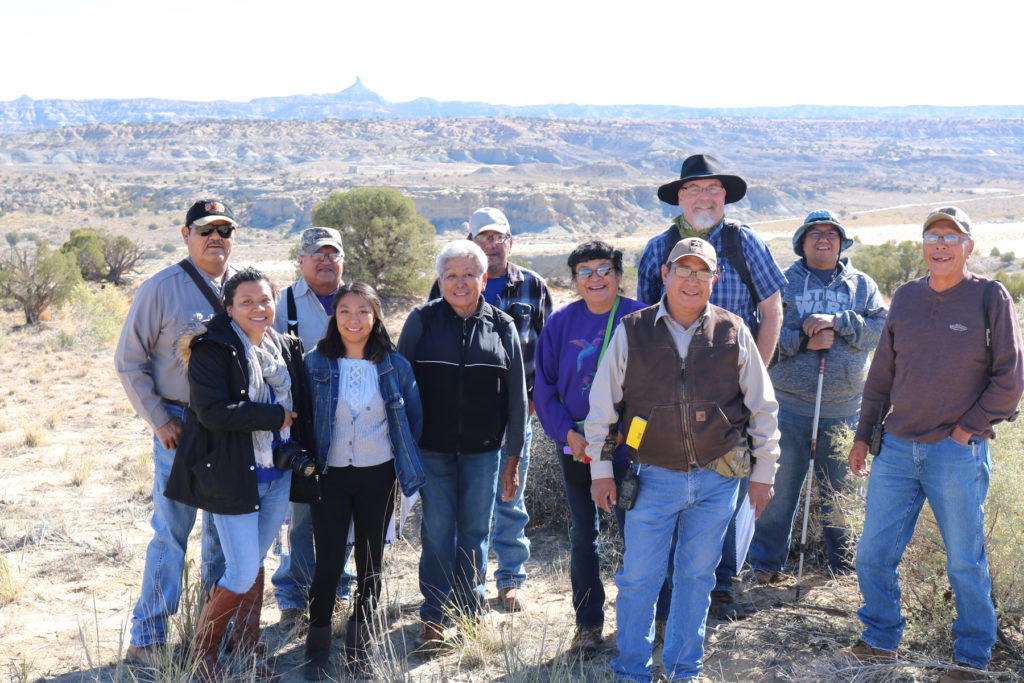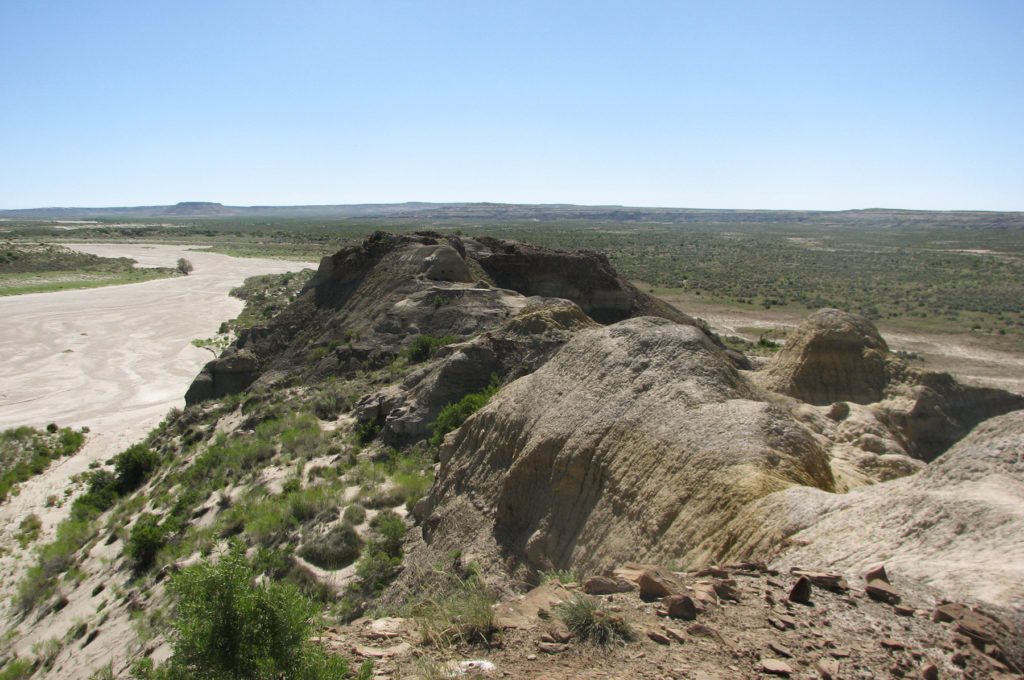- Home
- >
- Preservation Archaeology Blog
- >
- Acoma Project Fieldwork

(November 27, 2018)—Archaeology Southwest is working with the Pueblo of Acoma to document places of ancestral importance across the Greater Chaco Landscape. With the counsel of Acoma team members, we can better prioritize our shared protection efforts.
In October 2018, I went to the field with a team from the Pueblo of Acoma’s Historic Preservation Office (HPO). The team included Acoma Tribal Historic Preservation Officer Damian Garcia; HPO employee Juana Charlie; HPO Intern Alyssa Valencia; HPO Advisory Board Members Kim Charlie, Everett Garcia, and Karl Pedro; Tribal Monitors Chris Garcia, Fermin Martinez, and Darwin Vallo; and anthropologist Kurt Anschuetz. The fieldwork focused on the Greater Chaco Landscape (GCL).

Goals of the Acoma Project include:
- having the Acoma team visit the landscapes of Greater Chaco that are threatened by development
- collecting appropriate data to help inform BLM and BIA as they manage oil-gas development across the GCL and complete management plans in early 2019
- compiling data and producing an Acoma-approved report for BLM and BIA
- producing a confidential report for the Pueblo of Acoma
Our funders for this project include The Wilderness Society, National Trust for Historic Preservation, McCune Foundation, and the Just Woke Up Donor Advised Fund.
The group visited a number of locales spread across the GCL, including the Great North Road, Twin Angel Pueblo, Halfway House, the Pierre’s complex, the base of Fajada Butte, Pueblo Bonito, the Bis sa’ani Community, Pueblo Pintado, and Kin Ya’a.

The fieldwork was very productive and the team made important connections to the landscapes of Greater Chaco. Follow-up work involves a meeting in January 2019 to discuss findings, and completion of a draft report in February.
One thought on “Acoma Project Fieldwork”
Comments are closed.
I hoped to reach Kim Charlie, who was quoted in Scence today as saying that the fact that the Acoma language has a word for “camel” provides additional support for the thesis that the Americas were settled much earlier than previously believed. I just want to point out that, according to what I’ve read, the US army in the 1800s experimented with camels in the Southwest, which is another possible explanation.